The glorious fate of the transport "Anadyr"
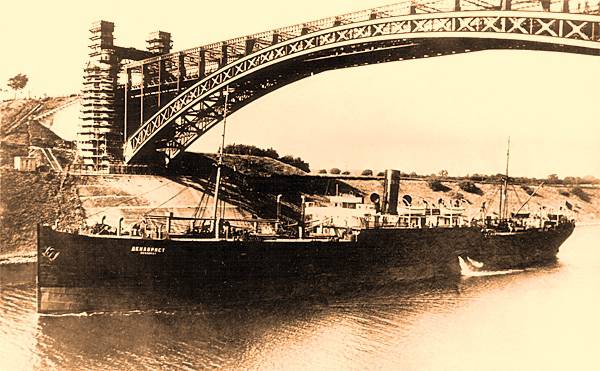
This transport was the only one of the ships that survived the Tsushima battle, who managed to avoid internment. In the course of a fierce battle, unarmed vehicles managed to avoid death and break away from persecution. In November 1905, he returned to his homeland, delivering 341 people rescued from the Ural cruiser, all his cargo, shells and spare parts for Borodino battleships to Libava. His life continued for many years, including during the Second World War. But first things first.
The Russo-Japanese War demanded a significant increase in the composition of the Russian fleet large-capacity ocean transport. Among other vessels, at the Vickers factory in Barrow (England), through the mediation of Maurice Le Boulle, the Ministry of the Sea acquired the unfinished Franche-Comté steamer, which was brought to Libau in April 1904, renamed Anadyr and credited to the second rank fleet ships.
The ship turned out to be in such an unattractive form that the port commander Rear Admiral A.A. Iretskov was forced to send Captain 2 of rank V.F. Ponomarev for a personal report to the Chief of the Main Naval Staff on the situation. According to Iretsky, the vessel was “an empty body with two cars, six boilers, winches for lifting weights and nothing more.” There were no equipped living quarters, a saloon, galleys, dynamos, steam heating, engine telegraphs and speaking pipes - all without which "no ship can sail." To bring the transport in order, it was necessary to “energetically and immediately proceed to the completion of at least the most necessary”. The Rear Admiral asked the General Staff to open a special loan to “immediately attract Riga and Libava factories”, and also to send a ship engineer to control the “extremely complex work” on re-equipment of passenger and cargo ships purchased abroad “for cruising and transport purposes”.
After docking the “Anadyr”, they began loading coal into all the holds, then began work on additional equipment. "Franche-Comte", as well as passenger steamers (the future auxiliary cruisers "Don", "Ural", "Terek", "Kuban", transports "Irtysh" and "Argun"), were acquired by order of the general manager of commercial shipping and ports, Grand Duke Alexander Mikhailovich, and in the MTC and GUKiS about these courts "there was no information." The lack of a complete set of drawings, specifications and other documentation made it extremely difficult to complete the construction of the Anadyr.
He and the Irtysh armed themselves with eight 57-mm cannons from among eighteen French sent for destroyers. Both vehicles received two 18, 14- and 6-oars, respectively, launch, boats and whaleboats, which were removed from the cruisers "Herzog Edinburgh" and "Memory of Azov". With the greatest length of 145,7 m, the displacement of the three-deck “Anadyr” was 17350 t. Six cylindrical boilers of the Morrison system provided steam with two steam machines with an 4600 horsepower. The highest speed achieved during the tests was 13,3 knots. An 10,6-nodal transport could pass 3500, an economic (7,8 knots) 5760 miles.
Two dynamos provided lighting (210 permanent and 110 portable incandescent bulbs). Sixteen cargo arrows were serviced by twelve winches of 3 tonnage each. Two transverse and two “mounted” longitudinal coal pits could hold up to 1100 tons of fuel. In a double day, 1658 T of ballast water was placed; if necessary, 1100 T was taken directly into the fourth hold (there were six holds in total). Two Circle water desalination plants with a capacity of 10 t / day fed two fresh water tanks with a capacity of 16,5 t. In the cockpits 220 people of the team could fit.
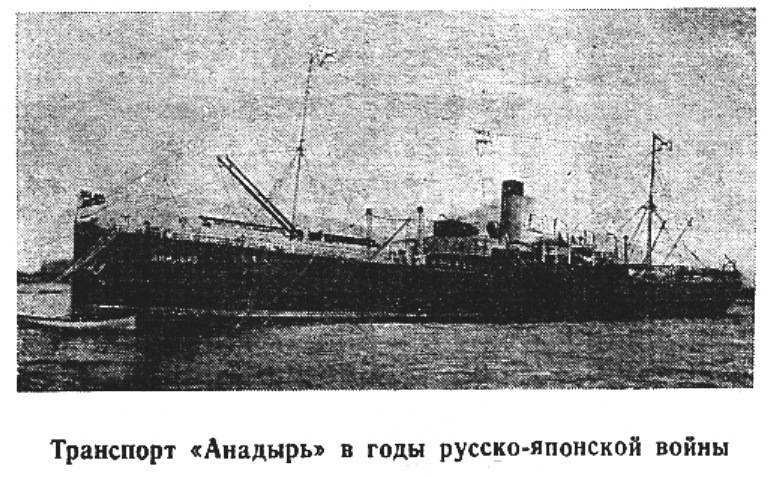
At Anadyr, included in the 2 th Pacific Squadron, they loaded about 150 mines of barrage and countermines, a small amount of ammunition and several small-caliber guns from the "catching up" detachment of Rear Admiral N.I. Nebogatova, as well as other goods for the needs of the squadron and the order of 7000 tons of coal. Before the start of the Tsushima battle, “Anadyr” was heading in the convoy of transport ships. During the day of the 14 battle of May 1905, the transport received minor damage, including from a collision with the Rus transport. At night, Anadyr was behind the squadron, and its commander, captain 2, rank VF Ponomarev, decided to turn south, abandoning a breakthrough in Vladivostok. Without going to the nearest ports, so as not to be interned, possessing a large supply of coal, the ship headed for Madagascar. 14 June "Anadyr" arrived in Dieto-Suarez and, having received instructions from St. Petersburg, returned to Russia.
In Libava, in December 1905, wooden floorings were replaced at the spar-deck and logging of the vessel. The following year, Anadyr was taken to an armed reserve with reduced personnel. Subsequently (1909-1910) on the main deck equipped stalls for the transport of the landing troops, created a special device for keeping them clean. The poor condition of the boilers caused the order in September 1910 of the Sosnovitsky Pipe Plant a large number of fire tubes and hot-water pipes, and also launched the offer of the Kolomna Machine-Building Plant Company from 3 March 1910 to equip the transport with four diesel engines, 3000 hp. each with the same number of 2100 kW dynamos and propeller motors. In case of a favorable decision, the Company was obliged to “complete the first experience of using oil engines in conjunction with power transmission ...”. 22 May 1910, the Company's Board received a preliminary, “conditional” outfit in the amount of 2840 thousand rubles, but the interesting project of a radical replacement of the ship's power plant remained on paper. Perhaps it was the result of unsuccessful tests in Kolomna of an experienced cylinder with an engine in 3000 l. with., if successful, the Company would receive the "final" order.
By order of the Maritime Office of 25 February 1911, the Anadyr and Riga transports were enlisted as auxiliary vessels in the Baltic Sea Fleet. Up until the beginning of the First World War (in the summer campaign), Anadyr usually made three flights to Cardiff in England, delivering from there each time to 9600 tons of coal, and in the winter it entered an armed reserve in Sveaborg with a brigade of battleships. During the war, the ship was part of the Baltic Sea Transport Flotilla, could take more than 11 700 tons of coal into holds, and in the double bottom space — more than 2640 tons of water; transport could carry troops. Communication was reliably provided by the Siemens-Galske radio system of the 1909 model of the year, the maximum speed of the vessel in 1915 did not exceed 10,5 bonds, the crew consisted of seven civilian officers and 83 lower ranks.
The presence in the Baltic fleet of only Angara and Kama (August 1916) could no longer meet the increased need for urgent ship repair, although “the experience of equipment and use for more than 10 years by floating workshops gave a brilliant result and showed complete feasibility and vitality a similar organization. " For servicing battleships, overhauling the mechanisms of destroyers and submarines, the commander of the fleet of the Baltic Sea, Vice-Admiral A.I. Nepenin found it necessary to “urgently” retool the Anadyr floating engineering vehicle, equipping it three times as large as the number of metal-working machine tools compared to Angara, which required a loan of up to 4 million rubles. and a term of about seven months. 26 August maritime Minister Admiral I.K. Grigorovich on the report MGSH, recognizing the re-equipment of transport "appropriate", wrote a short resolution: "It is desirable."
In early September, 1916, the shipbuilding department of the GUK, considered the issue of “equipping Anadyr vehicles for workshops to service ships of the fleet-lined fleet and destroyers of the Novik type and found it quite suitable, provided it is kept in a“ trustworthy ”condition. Specific issues of the workshop equipment (number, composition, placement of machines) were solved by the Mechanical Department of the State Management Company "in accordance with the instructions of the existing fleet and the experience of the existing floating workshops". 27 of September this problem was considered at a meeting of the Technical Council of the Main Directorate of State Administration in close connection with the arrangement of the coastal workshops of the Port of Emperor Peter the Great. The need to re-equip Anadyr was motivated by the doubling of the composition of the Baltic Fleet, the insufficient repair capabilities of Sveaborg and Revel and, most importantly, that the maintenance of the operating fleet of a powerful autonomous floating workshop would significantly expand its operational zone. The eight-month conversion period, which was deemed unrealistic due to the difficulty of obtaining imported machine tools, caused great doubts, so they decided to order the bulk of the equipment to Russian firms Felzer and Phoenix. As a result, the meeting decided to “consider, according to wartime circumstances, the necessary equipment for an Anadyr transport workshop on 350 workers.”
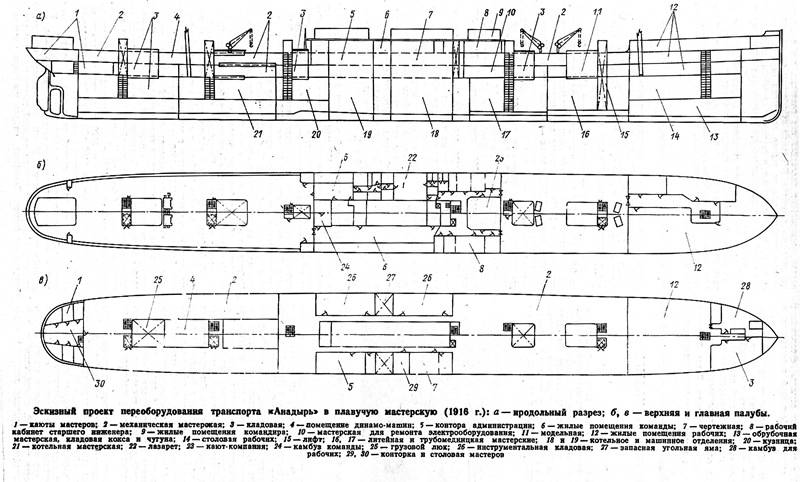
Vice Admiral A.I. Nepenin ordered to use as leaders "persons from the existing fleet, as having combat experience ... and better knowledgeable of the requirements for the workshop." All the works were entrusted to Sandvik Shipyard Dock and Mechanical Plant Joint Stock Company (Helsingfors), which also developed technical documentation. Re-equipment, production of reinforcements and foundations, as well as the installation of machine tools was supposed to manage according to the calculations of the Mechanical Department of the UMC about 3 million rubles, the purchase of machines, tools and accessories - 1,8 million rubles, materials - about 200 thousand rubles.
8 in November 1916, Managing Director of the Sandwick Works Adolf Engström presented his own preliminary estimate. The restructuring of the interior, the installation of electrical equipment, telephone and bell lines, machine tools, furnaces, engines, etc., were estimated at 5709 thousand Finnish brands, and purchases of machines abroad - at 490 thousand dollars. It was planned to retool the vessel within eight months after receiving the shipbuilding materials, and two more needed for the delivery of the machine park. Work began in early January 1917.
On the spardek it was necessary to repair the officer cabins; the middle superstructure, in which the premises of the administration of workshops and medical staff were equipped, was decided to be connected with the aft; A new command bridge and a forecastle with a wooden deck were built, under which living quarters and premises for 134 craftsmen and sanitary facilities for all 350 workers were organized. Cargo trucks were reworked and new skylights were installed, rigging of masts was changing, from which extra arrows were removed. In the superstructure on the first (upper) deck, the cabins of officers and medical personnel were repaired, an infirmary, two cockpits for the crew of the 70 and 20 people, a galley and sanitary facilities were equipped. On the second (main) deck, new bulkheads, shafts and ladders were installed, hatches were altered, cockpits for 102 workers and a galley for 350 workers, storerooms and workshops were equipped in the bow, and masters' cabins and a canteen in the stern. On the third deck, new porticoes were made for loading coal, cargo elevator shafts, various storerooms and an electrical equipment repair shop, refrigerator compartments, a galley, a bathhouse, a laundry, etc. In the bow - living quarters for 132 workers and master cabins; on the fourth and fifth decks, which were newly manufactured, there were various workshops and two canteens on 350 workers (in the bow).
The hull installed 220 new side windows with combat covers, waterproof doors, three freight, kitchen and passenger elevators; similar decks, handrails with handrails were installed on the decks, the following systems were carried out: steam heating, ventilation, sanitary, fire and drinking water, a power station was mounted consisting of two Laval turbo-dynamo machines and so many dynamo machines that were rotated by means of the Bolinder engines. The bell alarm and telephone network were calculated on 20 subscribers, the radio room was equipped on a spardek, six electric cargo cranes were installed on the upper deck.
On the fourth deck, in the stern of the engine room, a forge was installed with a hydraulic press, two steam and pneumatic hammers. The boiler room workshop (hold No. 5) was supplied with rollers, punching presses, planing, drilling and grinding machines, mechanical saws, metal cutting scissors, bending and regular plates. An electric freight elevator connected this workshop to the upper deck. In the holds No. 3 and 2 (fourth deck) there were also pipe mill and foundry workshops, the first of which was equipped with a hydraulic press, drilling and grinding machines. Under the foundry, which had a cupola, smelting and four oil crucible furnaces, there was a model workshop equipped with band saws and circular saws, planing, turning and drilling machines and workbenches; on the same third deck in the hold number 6 provided a common storeroom with a freight elevator and a lower mechanical workshop. Nasal mechanical workshop (located in front of the boiler casing and equipped with a freight elevator). On the left side, rooms for two refrigerating machines and a compressor were equipped, an air line was laid on the upper deck, which was necessary for pneumatic tools.
Order machines and equipment in Russia failed, so at the end of 1916, a mechanical engineer, Major General M. K, sent to England at the end of the year. Borovsky and Captain I rank V.M. Bakin: through the mediation of Lieutenant-General F. Ya. After receiving the consent of the British government, they should place orders for machine equipment, turbine generators and various materials for Anadyr and the workshops of the Port of Emperor Peter the Great (the total cost was estimated at 493 thousand f.), But until spring 1917, the question about loans and placing orders remained open.
27, April, the British government informed the Maritime Ministry that the solution of the problem was postponed until a confirmation from the representative of the Russian-English Committee in Petrograd "confirmation of the urgency and the need to immediately execute significant orders", clarification of sources of financing and the very possibility of manufacturing the equipment. By the beginning of June 1917, the Sandvik plant spent on the refurbishment of Anadyr from the “revised” estimate of 4 million rubles. - almost half, in the same month, the Mechanical Department of the GUK finally received the consent of the head of the British military supply mission, General F. Poole, to the “full equipment” of the floating workshop and to place orders for machine tools and materials in England. At the meeting in the GUK, the question of the complete set of equipment “first of all” was raised again, since the transport was so ready that “the machines could be installed immediately”. The British Treasury nevertheless insisted on reducing the size of the transaction, and it was possible to agree on a part of the supply with American firms. The shipping department of the United States General Directorate of Foreign Supply included machines with a total weight of 50 tons into the program of delivery of goods from the USA to October, but whether they arrived in Russia remained unknown.
October 21 The 1917 situation with the Anadyr was reviewed at a meeting of the Central Committee of the All-Russian Military Fleet (Tsentroflot) under the CEC of the Council of Workers 'and Soldiers' Deputies. The Centroflot Control and Technical Commission came to the following conclusion: it is impossible to finish re-equipment during the war due to rapidly growing costs, all work should be stopped and quickly prepared Anadyr “for inclusion in the merchant fleet”. On November 17, the head of the Main Directorate of the Main Command and Control Department proposed that the chief mechanic of the headquarters of the Baltic Fleet suspend the perestroika work. It is curious that Alexander Doubtful, GUK commissioner telegraphed 2 in December to 1917 in Centrobalt and demanded that this complicated question be completely clarified, insisting on the continuation of the re-equipment and protesting against the decision of a “certain commission”. Nevertheless, the Second Assistant Minister of the Sea, Vice-Admiral A.S. At the same time, Maksimov told the fleet headquarters (Helsingfors) about his consent to render "any assistance" in eliminating the order, but he believed that the contracting parties should do this.
As part of the last echelon of the Ice Campaign from Helsingfors, Anadyr arrived in Petrograd, where he remained laid up for almost three years. The experience accumulated as a result of the use of Angara and Kama allowed the development of a project for the conversion of Anadyr transport to a floating workshop with unique repair capabilities. Had it been implemented, the Baltic Fleet would have received one of the largest floating workshops, equipped with the latest technology of the time.
In March 1923, after repairs in Kiel, renamed “Decembrist”, the transport went to the shores of the Pacific Ocean (March 1923) - this was the first voyage of a Soviet ship from the shores of the Baltic to the Far East. After seven months, the steamer with valuable cargoes returned to the Petrograd port, having traveled more than 26 thousand miles, and then worked as part of the Baltic Shipping Company.
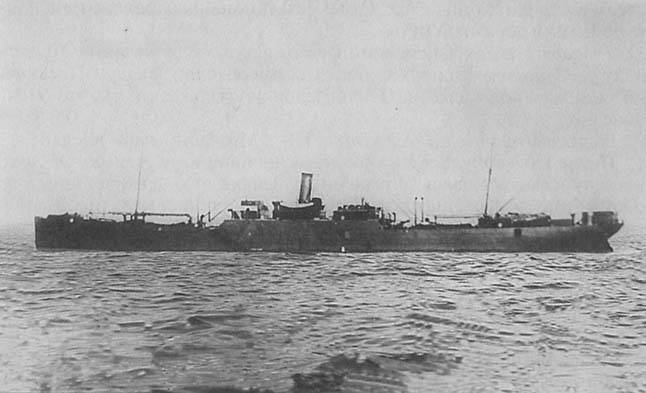
In the 1940s, the Decembrist remained the largest of the country's twin-screw cargo ships. In the summer of 1941, the real sea-wolf Stepan Polikarpovich Belyaev became the captain of the ship. And at the end of the year, the transport went on a flight to the United States, then to England, where a convoy was formed to deliver military cargo to Murmansk. 8 December 1941 of the Year “The Decembrist”, along with other ships, went to sea, accompanied by warships. The North Atlantic was able to pass without problems, "at hand" was a storm and a dark polar night. Very little remained of the Soviet port when the convoy ships turned back to help the British transport attacked by the Germans. "Decembrist" was left without cover. December 21, already at the entrance to the Kola Bay, transport was attacked by two Heinkels. Maneuvering the ship was ineffective, as the German pilots operated at low altitudes, and the attacks went one after another. The crew tried to fire from all weaponswhat was on board. And yet this time the ship was lucky. Of the three bombs dropped on the “transport, two exploded in the water without causing harm. The third, unexploded 250-kilogram bomb, was found in the twins of the fifth hold, where they transported barrels of gasoline! The sailors with the boatswain carefully carried out the bomb and dropped it overboard.
The Decembrist became the first Soviet ship to deliver a strategic cargo from overseas during the war years. The ship was unloaded quickly and on January 13 1942, the transport went overseas. Transport took part in two polar convoys - PQ-6 and QP-5. However, after the infamous PQ-17 convoy, the Allies decided to temporarily abandon the convoys in favor of attempting a single breakthrough of transports to Murmansk and Arkhangelsk.
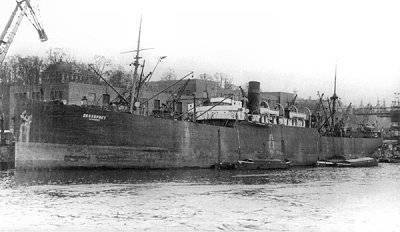
In the spring of 1942, transport left America, carrying a load of ammunition and raw materials on board. The voyage went without incident, but suddenly the ship was delayed in Iceland. Only at the end of October he was released into further solo voyage. On board the Decembrist, there were 80 people: 60 was the crew of the vessel and 20 was a military team that served guns and machine guns. Armed with transport was two three-inch guns, four small-caliber rapid-fire guns "Oerlikon" and six anti-aircraft machine guns.
On the way from Reykjavik to Murmansk, Dekabrist was attacked by 14 torpedo bombers and two bombers. By noon, the transport received several deadly hits, the most destructive - a torpedo hit the forepick. Despite this, for ten more hours the crew fought for the survivability of the vessel with all available means. When it became clear that the ship could not be saved, the surviving sailors lowered four boats. The mainland was trying to help, but the search operation conducted by submarine forces was not successful. At this time, the storm swept the boats, and only one of them, in which there was a captain and 18 sailors, reached the island of Hope in ten days. After a hard wintering on the island, only three survived. In the summer of 1943, they were captured by German submariners. The men were sent to the camp in Tromsø, and the ship's doctor Nadezhda Natalich was sent to the women's camp in Hammerferst. All three managed to survive and in the spring of 1945, they were liberated by the advancing Allied forces. It is also surprising that upon returning to the Far East, they again had the opportunity to work together - Natalich and Borodin, under the command of Belyaev, worked on the steamer “Bukhara”. A "Decembrist" and still rests on the bottom of the Barents Sea, 60 miles south of the island of Hope.
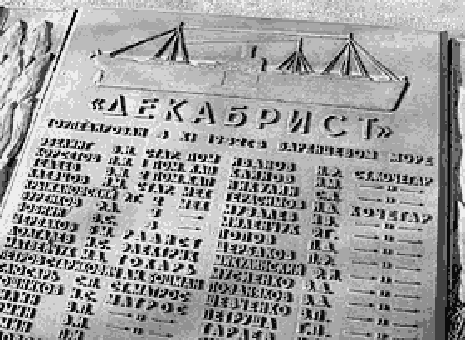
Sources:
Suzyumov E. The Decembrist leads the battle // The Arctic Circle. M .: Thought, 1982 - s.283-294
Ostrovsky A. Out into the Deep // Novaya Gazeta in Vladivostok. No. 310. 22 October 2015
A. Mironov. From the Baltic to the Pacific Ocean // This was on the Baltic: Essays and Memories. M .: Sea transport, 1960. C. 194-196.
Kharkov D. Transport "Anadyr". // Navy. 1995. No.6. C.34-39.
Klimovsky S. Transport-workshop "Anadyr". // Shipbuilding. 1997. No.2. C.68-70.
A group of authors. “Decembrist” (“Anadyr”) // Court of the Ministry of the Navy, killed during the Great Patriotic War 1941-1945: Reference book. M .: GPINIIMT Soyuzmorniiproekt, 1989. C. 18.
Information